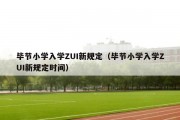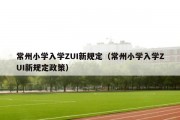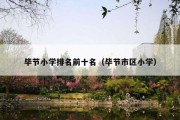小学英语语法(小学英语语法大全完整版)
今天我要分享的文章是小学英语语法,同时呢也对小学英语语法大全完整版进行说明,希望在下面的介绍中,能得到您想要的内容,咱们现在开始往下面说吧!
小学生英语语法知识点
【 #小学英语# 导语】正确的语法可以简化信息,简单的一句话就能传达很多信息,甚至包含多重意思,就像双关语一样。语法正确还能避免歧义,明确指代关系和修饰对象等,是很有用的,学进去了历槐饥就明白了。以下是 整理的《小学生英语语法知识点》,希望帮助到您。
小学生英语语法知识点篇一
1、祈使句
肯定祈使句以动词原形开头;否定祈使句以don’t加动词原形开头。
如:Open the box for me ,please.
请为我打开盒子。
Liu Tao! Please get up earlier tomorrow.
刘涛,明天请早点起床!
Don’t walk on the grass!
不要在草地上走!
Helen! Don’t climb the tree,please.
海伦!不要爬树。
2、go的用法
去干嘛用go +动词ing
如: go swimming; go fishing;
go skating;
go camping;
go running;
go skiing;
go rowing…
3、比较
than 前用比较级;as…as之间用原级。
如:My mother is two years younger than my father.
我妈比我爸年轻两岁。
Liu Tao jumps as far as Ben.
刘涛跳得和本一样远。
4、喜欢做某事
用like +动词ing或like+ to + 动原。
如:Su Yang likes growing flowers.
苏阳喜欢种花。
The children like to play with lanterns at Spring Festival.
孩子们喜欢在春节去玩花灯。
5、想要做某事
用 would like +to+动原或want + to +动原。
例:I’d like to visit the History Museum.=I want to visit the History Museum
小学生英语语法知识点篇二
1、现在进行时
表示正在发生的事情或进行的动作,常与now,listen,look等词连用,结构是主语+be动词(am, is, are)+动词ing.
如:It is raining now.
外面正在下雨
It is six o’clock now.
现在6点了
My parents are reading newspapers in the sitting room.
我父母正在客厅看明毕报纸
Look! The children are having a running race now.
看!孩子们正在赛跑
问句将be动词移前,否定句在be动词后+not.
2、一般现在时
表示经常反复发生的事情或动作,常与often, usually, sometimes, always, every day(week year…) on Sundays等词连用。
结构是主语+动词原形;当主语为第三人称单数即he,she, it, Tom, my mother, the boy等词时,动词后加s或es.
如:We have an English lesson every day.
我们每天都要上英语课
Do the boys run faster than the girls? Yes, they do.
男孩比女孩跑的快吗?是肢返的
问句借助于do, does否定句借助于don’t, doesn’t,后面动词一定要还原。
3、一般过去时
表示发生在过去的事情或存在的状态,常与just now; a moment ago; … ago; yesterday; last ( week; month; year; Monday; weekend); this morning等词连用。
结构是主语+be动词的过去式(was; were)或主语+动词的过去式。
注意:be动词与动词过去式不可同时使用。
如:My earphones were on the ground just now.
我的耳机刚刚还在呢。
Where were you last week? I was at a camp.
你上个星期去哪了?我去野营了
What did you do yesterday? I visited a farm
你昨天去干嘛了?我去参观农场了。
问句有be动词将be动词移前,没有be动词借助于did,后面动词还原;
否定句有be动词在后面加not,没有借助于didn't后面动词还原。
4、一般将来时
表示将要打算发生的事情或动作,常与tomorrow, next week(year; Tuesday…), this week( weekend ;evening; afternoon;…)today等词连用。结构是主语+be(am, is, are) going to + 动原或主语+will +动原。
如:What are you going to do tomorrow? I am going to have a picnic.
你明天要去干嘛?我要去野餐。
The childre are going to have a sports meeting next week.
孩子们下个星期将参加运动会。
Tom will/is going to see a play with his father this evening.
Tom今晚将和父母去看演出。
问句将be动词或will移前;否定句在be动词或will后加not.
5、情态动词
can; can’t; should; shouldn’t; must; may后一定加动词原形。
如:The girl can’t swim, but she can skate.
女孩不会游泳,但是会滑冰
Don’t talk in class, you should listen to the teacher carefully.
不要再课上说话,你应该认真听老师讲。
小学生英语语法知识点篇三
1、some
用于肯定句中,在否定句和问句中改为any,但当表示委婉语气时仍用
如:Can I have some writing paper? Would you like some orange juice?
2、代词
人称代词主格做主语用一般放在句首或动词前,主格分别是 I you he she it we you they。
宾格做宾语用,一般放在动词或介词后
如:Open them for me. Let us …, join me等。
宾格分别是me you him her it us you them。
形容词性物主代词放在名词前,不能单独使用,分别是my your his her its our your their
名词性物主代词相当于形物加名词,它只能单独使用后面不好加名词,分别是mine yours his hers its ours yours theirs。
3、介词
介词后要么不加动词,加动词只能加动词ing形式
如:be good at running;
do well in jumping;
4、时间介词
季节前,月份前用介词in
如:in summer;in March
具体的哪一天如星期几,几月几日用介词on
如:on Saturday; on the second of April; on Wednesday morning
在几点钟前用介词at
如:at a quarter to four;
只在上下午晚上用in
如:in the morning/ afternoon/ evening;
但在夜间用at night。
另:季节,月份和星期前不好加the.
5、名词复数构成的方法
有规则的有:
(1)直接在名词后加s
如orange—oranges; photo—photos;
(2) 以x, s, sh, ch 结尾的加es
如:box—boxes; glass—glasses; waitress—waitresses; watch—watches;peach--peaches
(3) 以辅音字母加y结尾的改y为i加es
如:study—studies;library—libraries; hobby—hobbies; family—families;
(4)以f, fe结尾的改f, fe 为v+es如:knife—knives; thief—thieves(注:以o结尾的我们学过的只有mango加es, mango—mangoes其余加s,)
不规则的有:
man—men; woman—women; people—people; child—children
小学英语语法知识要点总结
小学英语语法知识要点总结 篇1
一、一般将来时
1) shall用于第一人称,常被will 所代替。
will 在陈述句中用于各人称,在争求意见时常用于第二人称。
Which paragraph shall I read first.
Will you be at home at seven this evening?
2) be going to +不定式,表示将来。
a. 主语的意图,即将做某事。
What are you going to do tomorrow?
b. 计划,安排要发生的事。
The play is going to be produced next month。
c. 有迹象要发生的事
Look at the dark clouds, there is going to be a storm.
3) be +不定式表将来,按计划或正式安排将发生的事。
We are to discuss the report next Saturday.
4) be about to +不定式,意为马上做某事。
He is about to leave for Beijing.
注意:be about to 不能与tomorrow, next week 等表示明确将来时的时间状语连用。
一、一般过去时的用法
1)在确定的过去时间里所发生的动作或存在的状态。
时间状语有:yesterday, last week, an hour ago, the other day, in 1982等。 Where did you go just now?
2)表示在过去一段时间内,经常性或习惯性的动作。
When I was a child, I often played football in the street.
Whenever the Browns went during their visit, they were given a warm welcome.
3)句型:
It is time for sb. to do sth "到时间了" "该了"
It is time sb. did sth. "时间已迟了" "早该了"
It is time for you to go to bed. 你该睡觉了。逗兆
It is time you went to bed. 你早该睡觉了。
would (had) rather sb. did sth. 表示宁愿某人做某事
Id rather you came tomorrow.
4) wish, wonder, think, hope 等用过去时,作试探性的询问、请求、建议等。 I thought you might have some. 我以为你想要一些。
小学英语语法知识要点总结 篇2
一、序数词——由基数词转变而来,表示“这是第几个”
1.口诀巧记基数词变序数词:“一、二、三,要全变;其余都加th;th里有例外;八去“t”;九梁樱去“e”;“ve”要用“f”替,见“y”变成“i”和“e”,词尾加上“th”;若是遇到几十几,只变个位就可以。”第一、第二、第三分别:first,second,third,eight—eighth nine—ninth,five—fifth,twelve—twelfth,twenty—twentieth,forty—fortieth,twenty-five—twenty-fifth。
2.序数词有时用缩写形式:
阿拉伯数字+序数词末尾两个字母(只有1st,2nd;3rd为特殊形式,其他都是th)
二、序数词的基本用法
1.序数词在句子中时,前面一般要加定冠词:
如:I like the second dog.
2.有时前面可以加一个橡指丛不定冠词a/an来表示“再一”, “又一”这样的`意思:
We’ll have to do it a second time.
3.基数词也可以表示顺序,要将基数词放在名词之后:
the first part------part one
the third lesson------lesson three
小学英语语法知识要点总结 篇3
1.简单句(simple sentence)
简单句只有一个主语(或并列主语)和一个谓语动词(或并列谓语动词)。例如:
The whole village came out to welcome him home.
The temperature and pressure are controlled and adjusted with these switches.
2.并列句(compound sentence )
并列句是由等立连词或分号把两个或两个以上的简单句连在一起。例如:
An urgent telegram was sent to her husband and she was waiting for a reply.
You can’t count on him to help; he is such a busy man.
3. 复合句(complex sentence)
复合句,即主从复合句,是有关联词连接主句和从句构成的。例如:
Whether we go or not has not been decided.
It shocked me that Peter did not tell anybody where he was. I don’t doubt that he can do a good job of it.
小学英语语法知识要点总结 篇4
Unit 1
1. the first day 第一天
2. the new term 新学期
3. all the students 所有学生
4. at school 在学校
5. each other 互相
6. a new building 一幢新教学楼
7. a lot of rooms 许多房间
8. how many 多少
9. two reading rooms两间阅览室
10. have a look 看一看
11. go and play 去玩
12. go and see. 去看看
13. go and have a look 看一看
14. a lot of flowers and trees 许多花和树
15. good idea 好主意
16. in the street 在街道上
17. on the plate 在盘子里
18. on the table 在桌子上
句子
1. Is there a garden in the school? No, there isn’t.
学校里有个花园吗?不,没有。
2. Is there a reading room near the playground? Yes, there is.
操场附近有个阅览室吗?是的。
3. Are there any bookcases near the window? No, there aren’t.
窗子附近有一些书橱吗?不,没有。
4.Are there any pictures on the desk? Yes, there are. 课桌上有一些图片吗?是的。
5. How many TV rooms are there in the building? There are four.
大楼里有几间电视房?有四间。
6. I’m not sure.我不能确定。
Unit 2
1. my parents 我的父母
2. live in a new house 住在新房子里
3. near her school 在她的学校旁边
4. very much 非常
5. a large sitting-room 一个大客厅
6. in your bedroom 在你的卧室
7. some dolls 一些洋娃娃
8. a map of the world 一张世界地图
9. on the wall 在墙上
10. behind the door 在门后面
11. in the cat’s mouth在猫的嘴里
12. look happy 看上去高兴
13. in the afternoon 在下午
14. in the music room 在音乐室里
15. near the bed 在床边
16. on the desk 在桌上
17. in Picture 1 在图片1
18. the rabbit in the black hat 带着黑帽子的那只兔子
句子
1. What’s between the chairs? There’s a telephone between the chairs.
椅子中间有什么?椅子中间有个电话机。
2. What’s on the table? There are some glasses on the table.
桌子上有什么?桌子上有些玻璃杯。
3.There isn’t a pencil on the desk. 课桌上没有一支铅笔。
4.There aren’t any pictures on the wall. 墙上没有任何图片(复数)。
Unit 3
1. have a Music lesson 上音乐课
2. sing a song 唱一首歌
3. play the violin 拉小提琴
4. listen to 听
5. follow me 跟着我
6. sing it together 一起唱
7. make a puppet 做木偶
8. make a model plane 做模型飞机
小学英语语法知识要点总结 篇5
1:“first”是序数词,与“the”相连,解释为第一。
2:像“first,term,world”作为词组出现时前面要加“the”。
3:“all”所有;后面的可数名词用复数形式,be动词用“are”。
4:“any”一些;用在否定句和一般疑问句中,与“some”同义。“some”用在肯定句中。
5:there be+数词,采用“就近原则”。
6:a map of China 与 a map of the world 要牢记。
7:要用“on the wall”,不能用“in the wall”。门、窗在墙上才能用“in the wall”。
8:can 后+动词原形。
9:play+the+乐器; play+球类;
10:like的用法
11:动词变动名词形式方法:
A--直接在动词后面+ing形式(大多数)。
B--以不发音的“e”结尾的,要去掉e后再+ing,比如:dancing,making,riding。
C--重读be音节,末尾只有一个辅音,须双写末尾的字母后再+ing,如:running,swimming,sitting,putting。
12:现在进行时的构成:be动词+动词ing形式。标志:now、look、listen、its time to。
13:现在进行时的一般疑问句 /问--be动词+人称+时态(动词ing)
答--Yes,he/She/it is/am/are. No,he/She/it isnt/arent/am not.
14:用Are you...? Yes,I am/ we are. No,Im not/We arent.
15: 动词后+人称宾格形式.
16:一般现在时的构成:第三人称单数(三单)。要注意:后面的动词+s或es。
特例:have→has do→dose go→goes; 标志:often,usually。
17:有些名词变动词时要变形式,例如:teacher→teach;driver→drive.
小学英语语法知识大全
英语语法口诀13条:
1、英语的词类
句子要由词组成,
英语词类有十种:
句中成分用实词,
名、代、动、副、数、形容:
冠、介、连词和感叹,
虚词附加或沟通。
词类功能掌握了,
造句之时好运用。
2、语序歌
主、谓、宾、表同汉语,
定语有同也有异。
状语位置更特殊,
不能全和汉语比。
3、肯定句变一般疑问雹瞎句
have和be提句首,
其它助词Do开头。
时间、人称由do变,
动词只把原形留。
谓语助词有几个,
第一助词提句首。
4、肯定句变否定句
否定词语加not,
放在be和have后。
其它要加动词do,
do的后面加not,
时间、人称由do变,
动词原形总保留。
谓语若是助词多,
not紧跟第一个。
5、名词的所有格
名词只变数,
不分主宾格。
人和动物类,
可变所有格。
撇(’)后加s,
相当汉语“的”。
时间、距离等,
也变所有格。
6、名词变复数
单数变为复数式,
加上“s”统言之。
下列结尾名词后,
要加“s”先加“e”:
发音[∫][t∫][s]和[z],
或是辅音加“o”时。
有些名词变复数,
词尾变化要注意:燃弯
“y”前字母是辅音,
一律变“y”为“ie”;
遇到“f/fe”,
有时需要变“ve”
少数名词不规则,
特别情况靠硬记。
7、时间名词前所有介词的速记
年月周前要用in,
日子前面却不行。
遇到几号要用“on”,
上午下午又是“in”。
要说某日上下午,
用on换in才能行。
午夜黄昏用at,
黎明用它也不错。
at也在时分前,
说“差”用to,
说“过”要用past。
8、介词用法歌
介词加宾语,
才能有实意。
表、定、状、宾、补,
词组在句里。
9、介词顺口溜
in 在……里,
out在……外,
在旁边的是beside,
靠近的为by。
on在……上,
under在……下,
above在上头,
below在底下。
10、be的用法歌
动词be,变化大,
“I”用“am”“You”用“are”
Is用于它(it)、他(he)、她(she)
复数一定要用“are”,
切莫用错闹笑话。
11、动词的时态
四种时间各四式,
联想对比便于记。
时间现在和过去,
各自还有将来时。
一般、完成、进行式,
完成进行是四式。
四四共有十六种,
看来复杂掌握易;
除去have/be以外,
动词变化有规律。
12、动词形式的变化
动词根本是原形,
变化形式有四种:
原形词尾加“s”,
现在第三单人称;
过去原形加“ed”,
过去分词也相同;
原形加上“ing”,
现在分词或动名。
原形词尾加“s”,
如同名词复数式。
若加“ed/ing”,
以下情况要注皮肆闷意:
词尾有ie只加d,
Ing去掉无声e;
词尾ie变成y,
然后再加ing;
辅音之后y结尾,
Y要变i加ed;
现在分词不变y,
直接加上ing;
词尾重读闭音节,
结尾辅音都双写,
r做结尾也一样,
重读音节r双写;
结尾字母若是“t”,
不是重读也双写。
过去分词过去式,
不按规则也有些。
13、动词不定式不带to的动词
四看(notice,observe,see,watch),
三使役(have,let,make),
二听(hear,listen to),
一感觉(feel)。
按:在上述动词后做宾语补语用的不定式不带to。

版权声明
本文仅代表作者观点,不代表xx立场。
本文系作者授权xx发表,未经许可,不得转载。
 升学参考
升学参考



